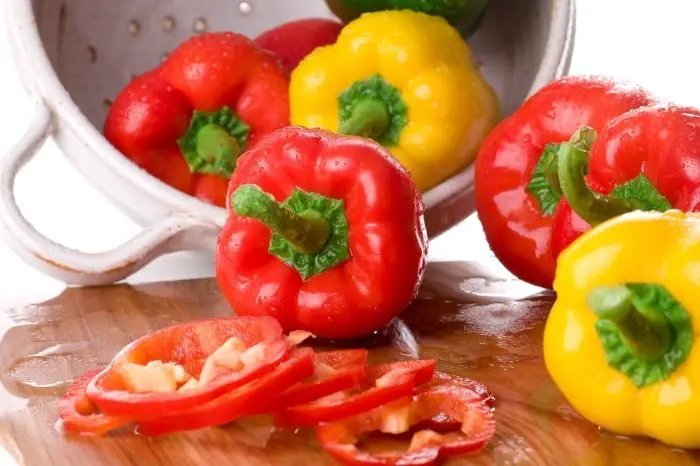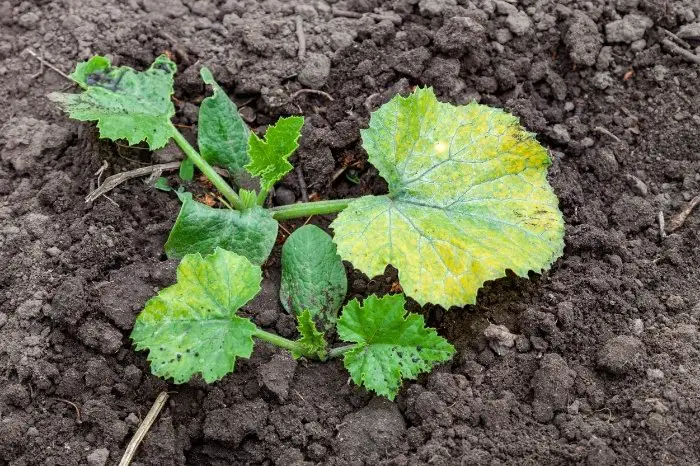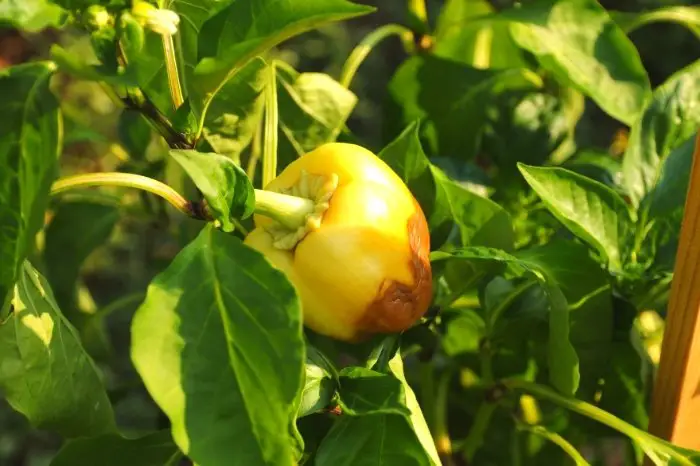Last Updated on March 18, 2022
Bell peppers are nightshade family fruits that are also related to tomatoes, chili peppers, and breadfruit. As easy as the bell pepper plant is to grow, there are still some common problems it faces. Bell pepper plant problems are what we will be discussing.
Bell peppers are pretty easy to grow so they can be a great addition to your vegetable garden. They are all native to Central America and South America. You get to enjoy pepper in your various cooking recipes as well as salads.
However, there are some bell pepper plant problems you may face and pepper diseases are common issues associated with them. You may also factor in some other pepper problems apart from pepper diseases. So, let’s delve into some common issues associated with growing bell peppers.
Brief On Bell Pepper
Bell pepper also referred to as sweet pepper is a type of fruit that belongs to the nightshade family. This sweet pepper can be eaten raw or cooked.
Unlike other peppers that tend to produce capsaicin (a chemical responsible for that strong burning sensation when it comes in contact with our tongue): bell peppers are the only member of the pepper plant that does not produce this capsaicin chemical.

Capsaicin which is absent in bell pepper is due to the fact that there is a recessive gene that eliminates capsaicin. For this reason, bell peppers are usually referred to as sweet peppers.
Bell Pepper Plants Not Growing: What Are The Reasons?
Different issues may arise and cause your bell pepper to diminish in growth or even stop growing. Some of the reasons include:
- Over-watering.
- Under-watering.
- Growing pepper with an undersized container.
- Dry soil.
Growing Peppers Problems
We will be looking at the common bell pepper problems and this will be in two categories. The first part will be issues associated with pepper diseases and pests. The other bell pepper issues will be related to non-diseases. So, read below to get some knowledge on them.
Check Out Reasons For Wilting Tomato Plants In Pots
A. Bell Pepper Plant Diseases
So, below are some of the bell pepper disease and pest problems you may face:
1. Mosaic Virus
This is a type of bell pepper disease characterized by yellow spots, wrinkly leaves, stunted growth, and poor or less fruit quality.
This disease is transmitted by aphids that transfer this virus. It is common during the periods aphids are mostly active and this is when the temperatures are around 70 to 85 degrees Fahrenheit.

To adequately deal with this bell pepper problem, uproot or remove the infected plants and burn or throw them away. The virus has been said to live up to a year. Therefore, avoid composting uprooted plants but burn or discard them.
2. Bacterial Leaf Spot
Bacterial leaf spot is quite common in pepper plants generally. This disease is characterized by yellowish spots on the leave of your pepper plant. These yellowish spots may end up turning brown and it causes leaf drop.
3. Powdery Mildew
Powdery mildew is related to warm and humid conditions. It usually shows up on the undersides of the pepper plant leaves.
4. Aphids
This is a tiny bug that sucks and feeds on pepper plants. They can eat a good portion of your pepper plant overnight.
If you notice or suspect aphid infestation in your pepper plant, you can make use of soapy water and wash them off. Or you can use a strong force of water (e.g. hose) to displace them from your plant. the use of neem oil can also prove effective.
5. Hornworms
Hornworms are another type of pest that can cause problems to your pepper plant. These worms are so large that it’s easy to just pluck or pick them off from your plant.
6. Flea Beetles – Bell Pepper Plant Problems
Flea beetles may look small in size but they can cause serious harm or problems to your bell pepper plant when you have a severe infestation. Their symptoms of an infested flea beetle pepper plant tend to show some distinct holes in the leaves of your plant.
You can solve the problem of flea beetles by dusting your pepper plants with talcum powder as this can help repel flea beetles.
- So, we have looked into some pests and diseases that may affect your bell pepper plants. Now here are the bell peppers that are non-diseases related:
B. Non-diseases Related Bell Pepper Problems
1. Under-watering
This issue is common during hot seasons. So if you don’t supply the plant with adequate water during this period, you may begin to notice some issues with the growth of your bell pepper plant.
Normally, pepper plants love full sun and require adequate watering. So, when you slack with the watering needs of bell peppers, they will not flourish appropriately so problems set in.
To reduce the chances of facing this issue, you should endeavor to water your bell pepper plant early morning and evening. The best time to water is once the sun has gone down.
2. Over-watering
Even though pepper plants generally like to be watered adequately, you should however avoid overwatering. Over-watering your pepper plant can cause problems. This is common with potted pepper plants that don’t have adequate drainage holes.
So, if you find yourself overwatering your potted pepper plant, simply cease watering and allow the soil to dry out. It is crucial you fix this problem on time to improve the chance of the pepper plant recovering.
3. Sun Scalding – Bell Pepper Plant Problems
Although pepper plants are sun-loving plants, they still need time to adjust before they can finally be moved outdoors. This is especially common with potted pepper plants. But this shouldn’t be an issue with peppers seed sown outdoors from the start.
The seedlings of pepper started indoors need a transition to outdoor conditions are the ones usually prone to sun scalding.
This is why it is crucial you harden off the seedlings started from indoors by gradually introducing them to outdoor conditions such as direct sunlight, wind, as well as changing temperatures. So, avoid the abrupt transition to full sunlight.

Bell Pepper Plant Problems: Final Say
Bell pepper plant problems can arise in different ways. The problems associated with bell peppers can be in form of pests, diseases, or even other environmental factors.
We have listed some of these issues that may arise when growing bell peppers and how to mitigate them. So, we do hope this article can be of great use to you regarding bell pepper plant problems.
FAQ’s
How do you revive a bell pepper plant?
Bell pepper can be revived if the cause isn’t too serious. For instance, if you have droopy leave which is usually caused by over-watering or under-watering, it’s possible to revive your pepper plant. For over-watering, simply cease watering for some days and allow the soil to dry out before you water again, and ensure there are enough draining holes of you’re using pot. For under-watering, ensure you water adequately especially when the temperature is hot.

Eunice is an enthusiastic gardener with a passion for growing beautiful flowers. She loves nothing more than spending time in her garden, tending to her plants and enjoying the outdoors. Eunice has been gardening for over 15 years and has developed a unique style of landscaping that is both practical and aesthetically pleasing. She is especially fond of growing roses and enjoys experimenting with different varieties and colors. Eunice takes great pride in her garden and often shares the fruits of her labor with friends and family. In her spare time, she enjoys reading gardening magazines and attending local horticulture events. Eunice is passionate about her hobby and is always eager to share her knowledge and experience with others.

